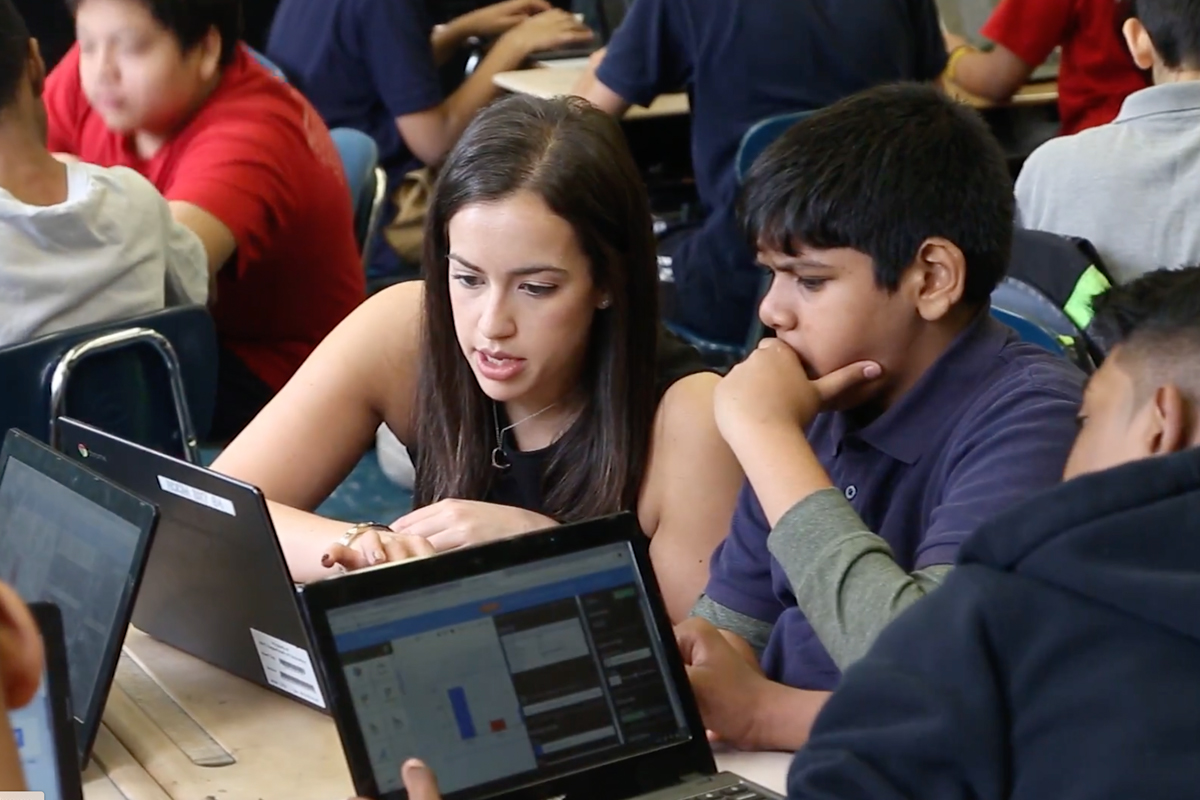
Group work in teaching English
Incorporating group work effectively into English language teaching requires thoughtful planning, clear objectives, and a balance between group and individual activities. It’s important to provide guidance, monitor progress, and encourage active participation to ensure that group work enhances language learning and fosters a positive and inclusive classroom environment. Here are the tips available for you to apply group work into your English teaching.

The Importance of Group Work in Teaching English for Students
Group work plays a significant role in teaching English to students, and its importance can’t be understated. Here are several reasons why group work is essential in English language education:
Language Practice:
Group work provides students with ample opportunities to practice speaking, listening, reading, and writing in English. It allows students to engage in real-life conversations, which is crucial for language development.
Communication Skills:
Collaborating with peers in group activities helps students develop essential communication skills. They learn how to express their thoughts and ideas clearly, ask questions, seek clarification, and provide constructive feedback.
Cultural Awareness:
Group work often involves students from diverse backgrounds, which fosters cultural awareness and appreciation. It exposes students to different accents, dialects, and cultural norms, helping them become more culturally sensitive and inclusive communicators.
Collaboration and Teamwork:
Group work promotes teamwork and collaboration, valuable skills not only in language learning but also in life and future careers. Students learn to cooperate, share responsibilities, and work towards common goals.
Different Learning Styles in Group Work:
Not all students learn in the same way. Group work allows for a variety of teaching methods, accommodating different learning styles. Some students may excel in spoken language, while others prefer written communication or visual aids.
Peer Learning:
Group work allows students to learn from their peers. They can pick up new vocabulary, language structures, and cultural insights from fellow students, often in a more relatable and accessible manner than from the teacher alone.
Types of Group Work commonly used in English

Group Work Discussions:
Students gather in small groups to discuss a particular topic, theme, or text. This encourages spoken language practice and helps students express their opinions, ideas, and arguments.
Pair Work:
While not a traditional group, pair work involves students working together in pairs. It’s particularly useful for practicing conversational skills, role-playing, and peer feedback.
Debates:
Students are divided into groups that argue for or against a specific topic or proposition. Debates enhance critical thinking, persuasion skills, and vocabulary related to argumentation.
Group Work Projects:
Students collaborate on a long-term project, such as creating a presentation, writing a report, or producing a multimedia project. This type of group work encourages research, planning, and presentation skills.
Peer Editing and Proofreading:
Groups review and edit each other’s written assignments. This not only improves writing skills but also teaches students to provide constructive feedback.
Tips to apply Group Work effectively

Set Clear Objectives for Group Work:
Define clear learning objectives for the group work activity. What do you want students to achieve or learn? Align the activity with these objectives to ensure it’s purposeful.
Group Work Formation:
Consider the diversity of skills and personalities when forming groups. Balance proficiency levels and mix high-achieving students with those who may need extra support. You can also use random selection or let students choose their partners or groups.
Clear Instructions:
Provide detailed instructions for the group task, including the objectives, timeline, and expected outcomes. Ensure students understand the task and their roles within the group.
Time Management:
Allocate an appropriate amount of time for the group work activity. Monitor the time closely to ensure that groups stay on track and complete the task within the given timeframe.
Monitor and Circulate:
Walk around the classroom and actively monitor each group’s progress. Be available to answer questions, provide guidance, and offer clarifications if needed.
Encourage Participation:
Foster an environment where every student feels encouraged to participate. Ensure that quieter or less confident students have opportunities to share their thoughts.
Assessment and Feedback:
Assess students’ performance within their groups and provide feedback on their collaboration skills. Consider including group work as part of their overall assessment.
Additional Considerations

Group Dynamics:
Understand that each group has its unique dynamics. Some groups may naturally work well together, while others may encounter challenges. It’s important to be attentive to these dynamics and intervene when necessary to ensure a positive and productive atmosphere.
Group Size:
Consider the optimal group size for your activity. Smaller groups (2-4 members) often promote active participation, while larger groups (5-6 members or more) can allow for a wider range of ideas but may require more management.
Heterogeneous vs. Homogeneous Groups:
Depending on your objectives, you can form groups with mixed proficiency levels and backgrounds (heterogeneous) or similar levels and backgrounds (homogeneous). Both approaches have their advantages, and your choice should align with your teaching goals.
Task Complexity:
Adjust the complexity of the group task based on the students’ language proficiency and prior knowledge. More challenging tasks can promote deeper learning, but they may require more support and scaffolding.
Technology and Online Tools:
If you’re conducting group work online or in a blended learning environment, explore various collaboration and communication tools that can facilitate virtual group interactions.
Examples of Group Work for 4 skills in Teaching English
Activity 1: Group Storytelling
Objective: To develop all four language skills while collaboratively creating a story.
Instructions:
- Divide the class into small groups of 3-4 students.
- Provide each group with a set of images or a short written prompt to serve as the story’s starting point.
- In their groups, students must collectively create a story that includes the provided elements. Each student takes turns contributing to the story.
- As they build the story, students need to read the existing text, listen to their group members, speak to convey their ideas, and write down their contributions.
- Encourage groups to use descriptive language, dialogue, and creativity in their storytelling.
- After a set time (e.g., 20-30 minutes), each group shares their completed story with the class.
Activity 2: Group Debate
Objective: To improve speaking, listening, and critical thinking skills through debate.
Instructions:
- Divide the class into two groups: one group supporting a particular argument, and the other opposing it.
- Assign a debate topic relevant to the English language curriculum (e.g., “Should schools have more foreign language immersion programs?”).
- Provide time for each group to research their position, using reading materials as references.
- In pairs or small groups within their teams, students discuss and organize their arguments in writing.
- Conduct the debate with each group presenting their arguments and counterarguments. Encourage active listening and respectful speaking.
- After the debate, students individually write a reflection on the experience, summarizing their main arguments and the opposing arguments they encountered.
Activity 3: Collaborative Reading and Summarizing
Objective: To enhance reading comprehension, summarization skills, and speaking.
Instructions:
- Select a short passage or article related to your curriculum and divide it into sections.
- Form small groups, ensuring each group has access to a different section of the reading material.
- Assign each group a specific task: read and understand their section, then prepare a summary.
- After reading and summarizing their sections individually, students within each group come together to discuss their summaries and create a coherent summary of the entire text.
- Groups take turns presenting their summaries to the class, emphasizing key points and important details.

Activity 4: Collaborative Writing and Editing
Objective: To practice writing, editing, and peer review skills.
Instructions:
- Provide each group with a writing prompt or topic relevant to your curriculum (e.g., “Write a persuasive essay on the importance of learning a second language”).
- Within their groups, students brainstorm ideas, outline their essay, and assign writing tasks to each member.
- After completing their individual sections, students exchange papers with a peer from another group for editing and feedback. This promotes careful reading and constructive feedback.
- Groups reconvene to incorporate the feedback and create a final, collaborative essay.
- Each group presents their essay to the class, focusing on the clarity of their argument and the effectiveness of their writing.
See also:
IELTS Preparation Trainers Needed
Secondary ESL teachers needed for Premium Schools
